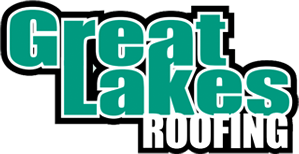Commercial Roofing FAQs
Q: How long does a typical commercial flat roof last?
A: An industrial-type flat roof can be expected to last 10 to 30 years, with the average lifespan being between 15 to 20 years. In order to maximize its expected lifetime, a roof should be regularly inspected, maintained, and repaired.
Q: How can I know what type of roofing system is best for my building and budget?
A: Because Great Lakes Roofing has been installing commercial roofs for more than 20 years, we are very familiar with the various types of roofs available, know which are better than others for specific types of buildings, and will make recommendations based on your building and budget. We also stay up on the latest developments in roofing materials and can recommend roofing systems based on wide range of knowledge and resources.
Q: Do flat roofs require maintenance?
A: The life span of a roofing system can usually be extended with proper maintenance. It is important to make sure all membranes, sealant, caulking, flashings, and penetrations are in good condition and to fix any problem before they begin to leak. Preventative maintenance program can help keep small problems from growing into costly leaks, interior damage, and early replacement. Proactive annual or semi annual inspections are advised.
Q: Can a new roof system be installed over an old roof?
A: Installing a roof system without removing the old system is not recommended. Water can infiltrate the old system without being apparent, causing interiors leaks. The moisture can also cause blisters or defects in the new membrane, and cause interior damage. The insulation of the old roof could be deteriorated which reduces the R-value of your roof system and can increase heating and cooling costs for the building.
Q: Should a flat roof be sloped?
A: Sloping should be implemented if the structure causes the roof to pond water for an extended period of time. Water that evaporates within 48 to 72 hours is acceptable. If standing water occurs for a prolonged period of time and additional drainage is not an option the roof should be sloped and drainage should be added. Certain roofing system warranties require sloping.
Q: If my roof leaks, do I need to replace the whole roof?
A: In most cases the answer is, “No.” Leaking can occur because individual flashings have come loose or a section of the roof has been damaged. It is best to have your roof inspected by an experienced roofing contractor to determine the extent of the problem and the best way to address it.
Q: What is the best time of the year to have my roof replaced?
A: Most roofing materials can be installed year round. Experienced roofing contractors understand the weather restrictions for each type of roofing material and can advise you of the optimal installation timeframe.
Q: What are the benefits of a roof maintenance program?
A: A commercial roof can easily cost hundreds of thousands of dollars. Semi-annual inspections and maintenance will prolong the life of your roof investment. Proper maintenance also helps you avoid costly leaks and the internal damage water can cause to the infrastructure, electrical equipment, furniture, and flooring, not to mention liability claims if a customer or occupant slips and falls.
Q: What is TPO ?
A: TPO stands for Thermoplastic Polyolefin, a synthetic rubber compound. Unlike other rubber compounds used in the roofing industry, it possesses the ability to be fused together like a plastic PVC membrane over its life. Most other (EPDM) rubber membranes are seamed together using either 2-sided tape systems or an adhesive.
Q: What applications are suitable for EPDM membrane?
A: EPDM membrane can be used for low and steep slope roofing, as well as unusually shaped structures (such as domes, barrels and other geometrically shaped roofs) due to its versatility. The membrane can be adhered, mechanically fastened, or loose laid. It can be installed above or below insulation (i.e., an IRMA application), and can also be used in below grade waterproofing applications.
Q: What are the advantages of a white roofing system?
A: A white roof surface reflects sunlight, keeping it up to 20% cooler than a black roof. If lowering your cooling costs is a concern, then a white roof may help. Some larger cities are making white roof surfaces a requirement to help offset heat generated by asphalt pavement and concrete structures.
Q: What is a cool roof?
A: Cool roofs are built with highly reflective and emissive materials that stay 50 to 60 degrees F cooler in the summer sun, thereby reducing energy costs, improving occupant comfort, cutting maintenance costs, increasing the life cycle of the roof, and contributing to the reduction of urban heat islands and associated smog. Initial material costs are comparable with traditional roofing materials – some cool products cost less than traditional materials, some cost up to 20% more. Cool protective coatings can be reapplied repeatedly every 10 to 15 years and reduce, if not eliminate the need for expensive roof tear-offs.
Q: What does a roof inspection include?
A: A thorough roof inspection should include the following:
- Accurate measurements of roof and wall areas
- Determination of the type of roof and (if possible) its manufacturer
- Cross-section cut taken of the roof system to determine the roof composition, attachment, and deck construction
- Assessment of overall roof condition and life expectancy
- Evaluation of slope and drainage conditions
- Listing of observable roof defects or deck defects
- Report on any signs of leaking
- Photo documentation of all of the above
- Recommendations for repairs, continued maintenance or replacement
Get a FREE Estimate
Call Great Lakes Roofing & Construction today at 866-551-7121 or 219-852-9323 to schedule a FREE roof inspection and estimate for your commercial roofing project.
CONTACT US
Subscribe to our Newsletter!
Emails you can trust
[instagram-feed]
